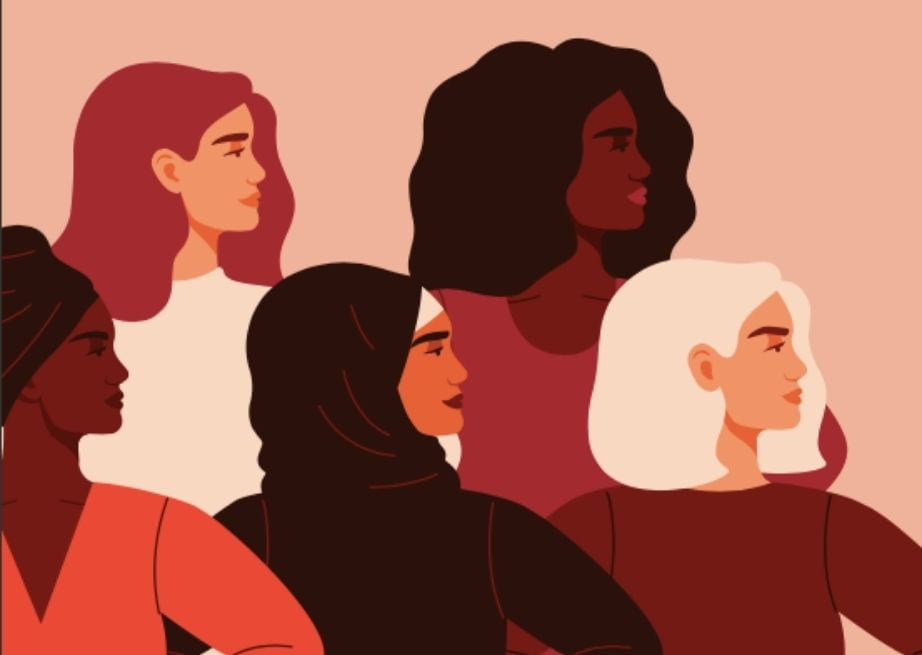South Asia is ranked fourth in the Global Gender Gap Index 2022’s Political Empowerment subindex, with a gender parity rate of 26.3%. While India is 48th on the subindex, its absolute score remains at a low of 0.267 out of 1. India’s higher position, despite a low score, indicates a global crisis of ensuring women’s presence in public policy and political decision-making.
If we consider domestic trends, women’s political participation in India has relatively improved over the decade while still remaining low in stand-alone terms. Nearly as many women as men cast ballots in the most recent Lok Sabha election in 2019, a landmark in India’s advancement of gender equality in politics and what has been dubbed a “silent revolution of self-empowerment“. However, less than 9% of the 8,049 candidates in the 2019 Lok Sabha elections were female. Therefore, while statistically women are active voters and political demographic, they are yet to become agential policy leaders and decision-makers.
The public policy space is notorious for having men as its “caretakers”, evidenced amply by not just the low proportion of women in the parliament compared to men but also the kind of questions asked to women leaders across states and constituencies. In a conventionally masculine ecosystem, even rarer are gender-based research organisations founded and run by women.
It becomes important to continue questioning whether the metrics of women in public policy can be confined to just the number of votes or political candidates. The public policy space is notorious for having men as its “caretakers”, evidenced amply by not just the low proportion of women in the parliament compared to men but also the kind of questions asked to women leaders across states and constituencies.

In a conventionally masculine ecosystem, even rarer are gender-based research organisations founded and run by women. As an anomaly, women-led think tanks and research labs are under harsher scrutiny but also experience a higher sense of responsibility in shaping an inclusive public narrative.
Also Read: Policy For Women, Policy Without Women?: Understanding Gendered Exclusion In Public Policy
In a political system like ours, public policy think tanks play the crucial role of political awareness, policy education, and research-backed persuasion to pursue the most beneficial paths of action. They act as convening hubs and safe spaces for policymakers and stakeholders of various kinds—whether from the private sector, the business community, civil society, research, or academia—to come together and exchange ideas. There is a growing understanding of the important role think tanks play in influencing public opinion and assisting in policy formulation. India is home to the world’s fourth-highest number of think tanks that have survived, multiplied and drawn illustrious faculty and scholars.
But are think tanks — possibly intellectual and progressive places — devoid of gendered biases and representations like most other spheres in public? The 2022–2023 Global Board Diversity Tracker highlights the global movement toward boardroom diversity. India has made tremendous progress toward gender diversity, growing the proportion of boards with at least one female member and the proportion of women in leadership roles.
But are think tanks — possibly intellectual and progressive places — devoid of gendered biases and representations like most other spheres in public? The 2022–2023 Global Board Diversity Tracker highlights the global movement toward boardroom diversity. India has made tremendous progress toward gender diversity, growing the proportion of boards with at least one female member and the proportion of women in leadership roles.

However, there is still space for development because inclusion is just as important as representation in the equation. Often there are questions about the best time to find a qualified candidate, given that the pool of female leaders is, regrettably, smaller if one considers the conventional hiring criteria that boards use, such as executives with CEO, CFO, or COO experience.
The idea of women collaborating becomes even more crucial in a space that harbours competition based on gendered access to resources. Be it Manjeet Kripalani and Neelam Deo running the only foreign policy think tank in India founded by women or Kanksshi Agarwal starting the country’s first incubator and aggregator for women in politics and policy. These developments highlight the significance and reach of individuals, organisations, media, and think tanks working together to share information, concepts, and knowledge while elevating women’s roles in public life and policy. Collaborations create welcoming environments for these vital exchanges and advancement, enabling women, in particular, to find space for learning, gaining opportunities, and receiving mentorship.

In recent times, the policy space has seen more women collaborating. Social Policy Research Foundation, a public policy think tank working with a set of dynamic and young researchers, had the privilege of working with industry stalwarts and trailblazers like Dr Sara Ahmed, founder and lead curator at the Living Waters Museum. Together, the two curated the Water Seekers’ Fellowship where the Living Waters’ Museum and SPRF went on to bring in WWF India to promote policy-cum-visual-based water research.
Also Read: Analysing The Need For A Feminist Approach To Gender-Based Violence Policy-Making
A conversation with Prerna Mukharya, a policy professional and the founder of Outline India, highlighted the narrative around inherited networks and self-built connections. Women often have to work harder in their careers due to skewed access to resources and networks that often function out of homophily, rooted in the social exchange theory.
Homophily suggests that people engage and build affiliations with those they perceive to be similar to or at par with them. Prerna’s work at Outline India stands out as a great example of how data can be leveraged to strengthen work and shape narratives for development across social impact themes. Similarly, and as a response to Homophily, Kanksshi’s NETRI and the Women Economic Forum create alternative spaces that prioritise women, offering a collaborative platform for women in the policy space. In such a light, SPRF’s work on the education-migration nexus, the intersection between carbon markets and the revitalisation of agriculture, or the gender-climate-access triad reflects the need to build a more inclusive and robust way of looking at public policy.
With the growing influence of think tanks on public policy, ensuring a diverse range of voices builds competition which also fosters a more robust impact and contributes to overall research objectives. The journey from gender intentional to gender transformative is one that all of us must collectively build for ourselves and hold for others who will forge their own paths.
With the growing influence of think tanks on public policy, ensuring a diverse range of voices builds competition which also fosters a more robust impact and contributes to overall research objectives. The journey from gender intentional to gender transformative is one that all of us must collectively build for ourselves and hold for others who will forge their own paths.

Diversity must be prioritised. Achieving gender representation in public policy will require addressing both intrinsic and extrinsic barriers that prevent women from accessing not only professional structures but also social networks in the policy space. Quotas promoting female leadership can be explored, and data on gender diversity in think tanks should be readily available to monitor progress. Female researchers should be offered the same informal networks and mentorship opportunities often more accessible to male researchers. All these efforts should take intersectionality into account and be part of a larger systemic plan to enable gender equality.
Also Read: Fewer Women In Leadership Roles In Gaming Arena Claims Global Gaming Gender Balance Scorecard





